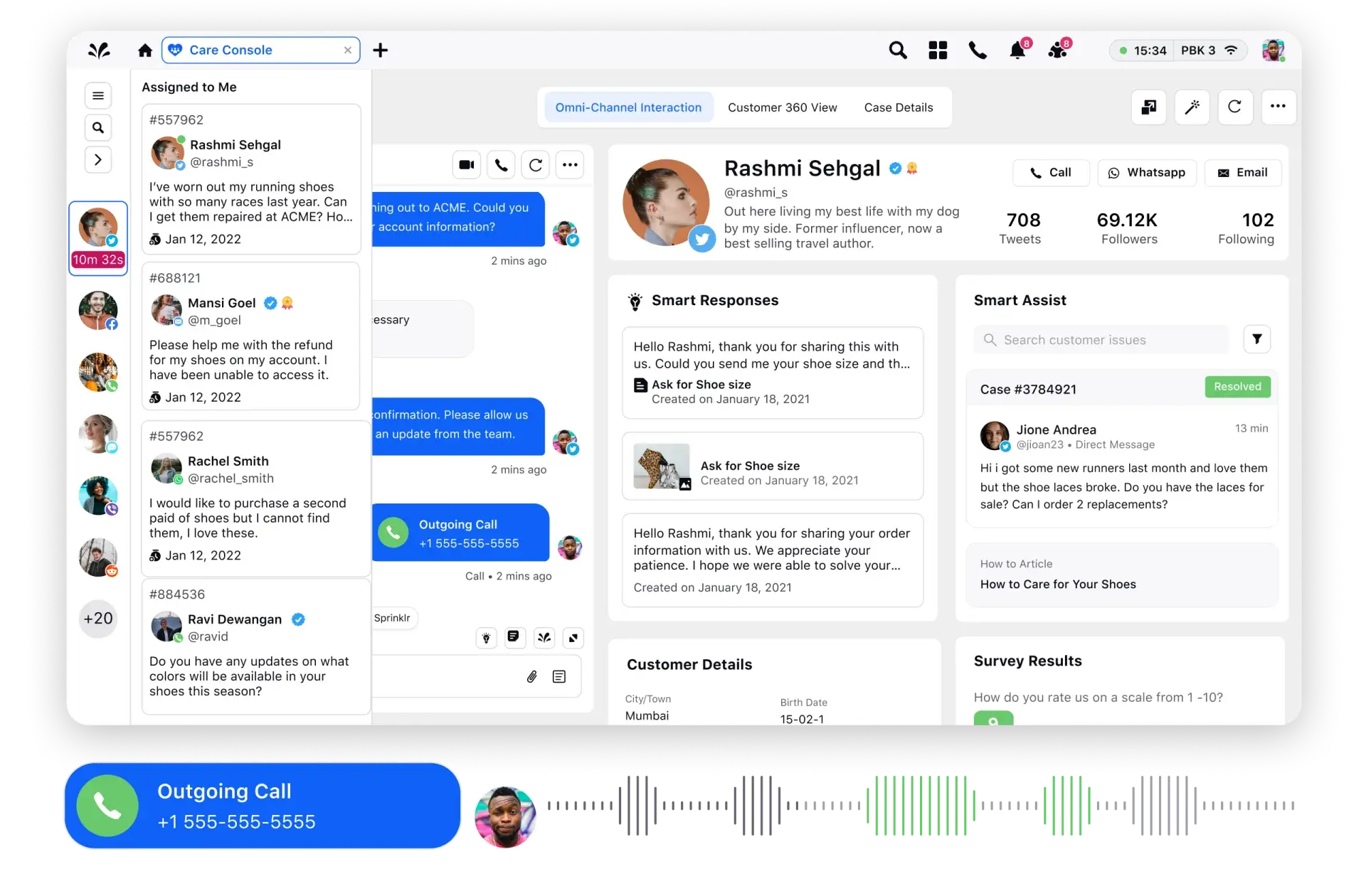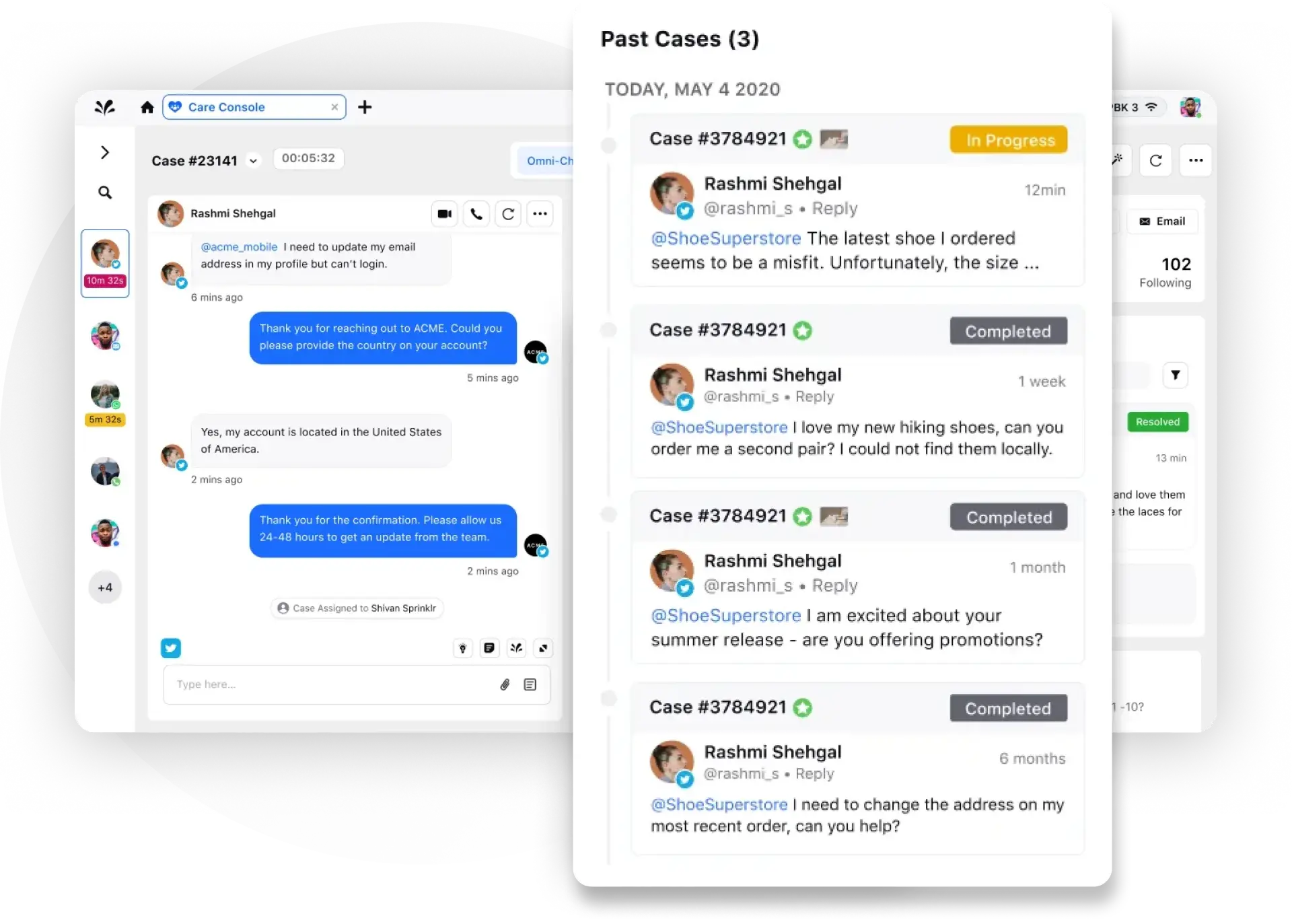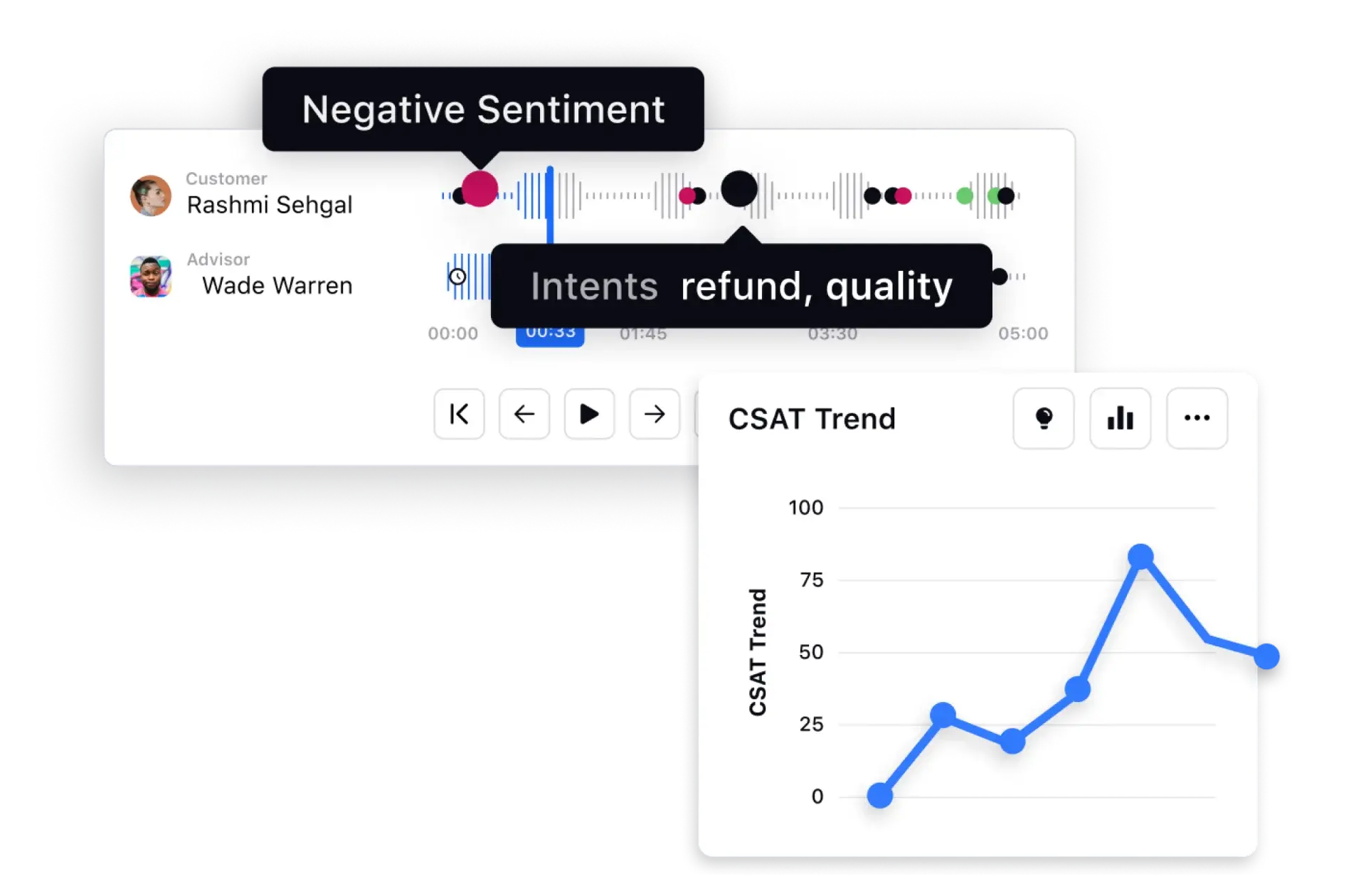What is customer dissatisfaction?
Customer dissatisfaction arises when a product or service falls short of a customer’s expectations, leading to frustration, disappointment or even a complete loss of trust. This emotional response is often triggered by unmet needs, poor communication or perceived negligence, creating friction in the customer experience.
When left unchecked, dissatisfaction can quickly spiral into negative feedback, damaging a brand’s reputation and eroding customer loyalty. The consequences are far-reaching —dissatisfied customers disrupt customer retention and impact operational efficiency and future sales prospects.
Types of dissatisfied customers with examples
Understanding the different types of dissatisfied customers is crucial to effectively addressing their problems. It helps you tailor your responses, prevent future issues and maintain customer loyalty.
Type of customer | Description | Examples |
😡 Angry customers | They feel wronged or frustrated by bad customer service or a negative experience. They often voice their dissatisfaction loudly. | A customer who receives incorrect billing multiple times might angrily escalate the issue via social media, amplifying the impact on your brand. |
😒 Churn customers | These customers quietly leave your brand for a competitor, usually after experiencing repeated dissatisfaction. Their silent exit can be particularly harmful as it leads to unanticipated drops in customer retention. | A long-time subscriber who encounters slow response times from support might gradually switch to a competitor without leaving feedback. |
😏 Demanding customers | They expect high levels of service or product customization or even discounts and can become frustrated when their expectations aren’t met. | A corporate client who expects bespoke solutions and rapid customer service might become frustrated when standard processes don’t align with their urgent needs. |
🔖Fuel Your Basics: 5 customer service and experience flaws that are losing you customers
Common causes for customer dissatisfaction
Customer dissatisfaction doesn’t come out of nowhere; it’s triggered by underlying issues you don’t know yet or have been ignorant about. Let’s discuss a few of them:
Poor customer service
When customers feel ignored, undervalued or face rude interactions, dissatisfaction escalates quickly. Slow response times or a lack of empathy can push them away, even from brands they like. In fact, according to a survey by PwC, 60% of Americans would walk away from a brand they love if it consistently delivers poor service, with almost 20% not even giving it a second chance.
Lack of self-service capabilities
Today’s customers demand instant access to solutions. The absence of robust self-service options — such as customer service chatbots, knowledge bases or automated FAQ sections — can lead to frustration and drive customers away. In fact, research says, 38% of Gen Z and millennial customers will likely abandon a service issue if they can’t resolve it themselves.
📑Related Read: We were promised effective self-service. What went wrong and what needs to change?
Unmet service expectations
About 80% of American customers say that a balance of speed, convenience, knowledgeable help and friendly service makes an experience stand out. Failing to meet these service expectations leaves customers feeling disappointed. When businesses fall short, dissatisfaction quickly follows.
Lack of personalization
Personalization in customer service is key to building strong customer relationships. Customers often feel overlooked when you don’t tailor your services or recommendations. Brands that offer a high degree of personalization gain 1.5 times higher loyalty than those that struggle to personalize effectively. Failing to meet this expectation can make customers feel disconnected and dissatisfied, leading them to look for more tailored experiences elsewhere.
Also Read: Personalized Customer Experience: Top 4 Ideas + Examples
6 Ways to address customer dissatisfaction promptly
Dealing with customer dissatisfaction isn’t just about solving problems — it’s an opportunity to strengthen customer relations and improve long-term customer loyalty. Here’s how you can address it effectively:
1. Listen actively and empathize
Active listening goes beyond just hearing complaints — it’s about understanding the emotions behind the words and demonstrating genuine empathy. When interacting with a frustrated customer, it’s crucial to pinpoint the true source of their dissatisfaction. Is it really the product or service itself, or is it the journey to resolution that’s frustrating them? Often, the original issue is minor, but things like poor IVR systems or long hold times add to the frustration, making it worse. In these situations, offering an immediate and sincere apology can go a long way, helping to diffuse the situation and showing the customer that their concerns are truly understood.
Apple exemplifies this approach. Genius Bar, its technical support team, is trained to actively listen, show empathy and understand the customer’s emotional state. Whether troubleshooting an iPhone or solving a technical glitch, Apple ensures customers feel valued by responding thoughtfully with personalized solutions.
💡Expert insight
Train your support teams to implement reflective listening. This simple technique can transform the interaction by summarizing the customer’s issue back to them before suggesting a solution.
For example, if a customer reports frequent internet disconnections, a support agent could say, “I understand you’re experiencing consistent disconnections. We sincerely apologize for the frustration this has caused and are actively working to resolve the issue.”
Reflective listening demonstrates that the customer is being heard and ensures both parties are aligned on the issue before moving forward with a solution. This builds trust and reinforces the customer’s confidence in your brand’s ability to meet their needs.
📌 Do Not Miss: 11 Essential customer service skills and how to develop them
2. Respond quickly and effectively
Speed is essential when addressing customer dissatisfaction. Quick resolutions calm frustrated customers and prevent minor issues from snowballing into more significant, damaging problems. A delayed response, on the other hand, can erode trust and escalate the situation, leaving customers feeling undervalued.
Amazon sets a high standard here. Its customer service team is known for resolving issues rapidly — whether it's a delayed delivery or a product return — often within minutes via the Amazon app or live chat. This proactive approach ensures that minor frustrations don't result in negative reviews or lost customers.
3. Stay customer-focused throughout conversations
When customers have already endured long hold times, the worst thing you can do is put them on hold again while your agents search for information. This issue often arises from siloed systems that make it difficult for agents to access customer data quickly.
To ensure seamless conversations, your customer service infrastructure must be designed with a customer-first mindset rather than a process-centric one. It should empower your agents, instilling confidence in their abilities to engage effortlessly with customers while simultaneously retrieving the necessary information in the background. This enables agents to focus on delivering an empathetic, solution-driven conversation.
💡 Pro Tip
A modern unified agent console essentially helps in this regard. Providing your agents with a single, integrated view of the customer across all customer touchpoints eliminates the inefficiencies of switching between screens to resolve an issue. With all relevant data and capabilities displayed on a single tab, agents can focus on solving the problem rather than navigating complex systems.
It also unifies multiple customer service channels — phone, chat, email — on one screen, reducing average handle time (AHT) by up to 30%. This speeds up the resolution process and boosts customer satisfaction significantly.

4. Empower frontline staff
Your frontline team represents your brand and should be empowered to resolve issues independently without requiring managerial approval. This autonomy enables faster decision-making and enhances the customer experience, reducing delays and boosting customer satisfaction (CSAT).
Look at the Ritz-Carlton. The hospitality chain empowers employees to spend up to $2,000 per guest to resolve issues without requesting management approval. This autonomy helps build customer trust and ensures swift, effective resolutions.
🤖 Agent assist – The true ally for customer service agents
Empowering agents is crucial for decision-making and efficiently handling cases, and Sprinklr's agent assist software offers intelligent, context-aware support to agents during live calls and conversations.
Powered by Sprinklr AI, the software recommends similar resolved cases, relevant knowledge base articles and guided workflows in real-time based on the conversation. This ensures that agents can focus on building customer connections while the software handles the complexities of resolution. With this advanced technology, customer interactions stay personalized and resolutions are achieved 50% faster. Learn more about agent assist.

5. Leverage technology for real-time support
Technologies like live chat support and chatbots enable you to respond instantly to customer issues, diffusing frustration before it escalates. For example, H&M uses an AI-powered chatbot to handle common queries in real time. Such technology provides customers with round-the-clock assistance, significantly reducing wait times and ensuring they feel supported, no matter the time or location.
😊 Good to know
It’s not just about real-time customer support; advanced quality management software also allows supervisors to provide real-time assistance to agents.
With AI-powered quality monitoring, supervisors can analyze customer intent, sentiment and shifts in CSAT scores in real time. They receive instant alerts on potential escalations and can intervene discreetly by whispering suggestions to agents without the customer’s knowledge.
This fosters empathy and confidence in a metrics-driven, high-pressure contact center environment, especially when agents are dealing with angry or high-value customers that your business can’t afford to lose.

6. Improve customer service training
Your team's success is directly tied to the quality of training they receive. Well-trained agents are more confident, efficient and equipped to handle complex issues, leading to better problem-solving and improved customer interactions.
Consider Starbucks. The company invests heavily in training its baristas, teaching them to address customer dissatisfaction with empathy, quick problem-solving and consistent service. This not only resolves issues faster but also ensures that its service team is always at the top of its game.
Prevent customer dissatisfaction with Unified-CXM
Digital customers are discerning and tech-savvy. They seek fast, personalized and seamless experiences across all channels. When a business has disjointed systems, it creates communication gaps, ultimately leading to frustration and dissatisfaction.
Sprinklr’s Unified-CXM addresses these challenges. It offers an all-in-one solution that seamlessly integrates and enhances customer engagement across channels. Its key features include:
✅ Omnichannel communication: This involves managing conversations from all platforms (social media, email, live chat and more) in one place.
✅ AI-powered insights: Leverages AI to analyze customer sentiment and predict future behaviors.
✅ Real-time collaboration: Enables teams to collaborate efficiently with unified data and customer profiles.
✅ Customer journey management: Maps out the entire customer journey to ensure smooth transitions between touchpoints.
✅ Proactive engagement: Alerts on customer issues in real-time, allowing for quick resolutions before dissatisfaction arises.
Ordinary customer service platforms might offer basic support but fail to create meaningful, personalized customer connections. They don’t have the intelligence to predict customer needs or the flexibility to provide real-time contextual support across multiple channels. As a result, service teams are left juggling between siloed systems, wasting time and resources, while customers are left waiting — dissatisfied and ready to walk away.
That’s where Sprinklr Service, built on the world’s only Unified-CXM platform, stands apart.
From handling queries across voice, social media, email and live chat to proactively engaging customers before issues escalate, Sprinklr ensures that every customer interaction is handled with care, speed and precision — leaving no room for frustration.
Schedule a demo of Sprinklr Service today and discover how you can transform customer dissatisfaction into lasting loyalty.
FAQ
Thank you for contacting us.
A Sprinklr representative will be in touch with you shortly.
Contact us today, and we'll create a customized proposal that addresses your unique business needs.
Request a Demo
Welcome Back,
No need to fill out any forms — you're all set.



